Are you ready?
The Plastic Packaging Tax (PPT) comes into effect on 1 April 2022, impacting plastic packaging manufacturers, importers and purchasers.
PPT is a new tax on plastic packaging manufactured in, or imported into the UK, that does not contain at least 30% recycled plastic. Manufacturers / importers of plastic packaging (including importers of packaging surrounding other goods) will need to take action as soon as possible in preparation for the new tax, which will be levied at a rate of £200 per metric tonne of plastic packaging.
What can be classified as recycled plastic?
The Draft Plastic Packaging Tax document by the HMRC, Paragraph 8 “Meaning of “Plastic” and “Recycled Plastic”, page 6 elaborates the definitions of plastics, recycled and recovered plastics. By this definition, Recycled Plastic is permitted to consist of “plastic that has been reprocessed from recovered material by means of a chemical or manufacturing process so that it can be used either for its original purpose or for other purposes.”. Within the section, the definition of Recovered Material is further elaborated under section 4, stating that “Recovered Material is pre-consumer material or post-consumer material that:
a) has been collected and recovered as a material input, in lieu of new primary materials, for recycling or a manufacturing process, and
b) would otherwise have been disposed of as waste or used for energy recovery.
It is therefore our understanding, that “Recycled plastics do not simply restrict themselves to PCR material but in fact includes Pre-Consumer waste/Post Industrial waste, as well (see definition under section 5 of page 6 of the guidance as well as ISO 14021 definitions on Waste – Waste recycled away from a process using recognised/ accredited process will likely be eligible, albeit legislation does not currently require separate accredited repressor accreditation).
What is the Difference between EPR and Plastic Tax?
In a nutshell, Plastic Tax is a tax levied on industry for materials which do not contain a minimum level of recycled content (currently 30% in the UK – other regions may vary). EPR is a cost levied by the UK Government on the likes of Brand owners, retailers, on line market places and importers being held accountable for the net cost of collection and sorting for recycling, education and clear up of Packaging items they place on the UK marketplace. These costs are presently assumed by local councils
What is the Tax and its impact in UK and EU and what is EPR?
There are significant differences in the Taxation systems between the UK and the EU. We have attempted to simplify the differences in a tabulated form below:
| Impact | UK | EU |
| Taxation cost per tonne | £ 200 from April 2022*¹ | € 800 from January 2021 |
| Applicability of Tax | Materials not containing at least 30% Recycled content materials. Recycled material coming from chemical recycling is admissible for the calculation of the minimum recycled content | The levy will be composed of a share of revenues from national contributions calculated on the weight of non-recycled plastic packaging waste *₂; *₃. This share is paid by member states, as opposed to industry, however, may translate to industry taxation further down the line. Due to the definitions of Recycling needing to be collected and recycled at Scale, this tax will likely apply to all materials which are not able to be mechanically recycled and/ or in line with CEFLEX design guidance. Chemical Recycling and EfW will therefore likely not be eligible to be defined as Recycled. |
| Taxation Point | Current legislation on taxation point states tax will be levied at the last substantial modification before packaging and filling. Current definition on this is: A component is finished if it has undergone it last substantial modification or in cases where the last substantial modification happens when the component is packed or filled; its last substantial modification will be that before being packed or filled. Tax on Exported goods will be reimbursed, but the mechanism is not yet clear. This is just one exemption others include primary packaging used for medicines, transport packaging for imported goods, cellulose. | The levy will be paid annually by each Member State. However, it will be up to each member state to decide their own mechanism to raise the necessary contribution to the EU budget. It is not a direct taxation on the plastic industry. Each Member State can decide where to find the resources to honour this obligation. |
| Measures of evidence | 2 systems: For Tax accounting, invoices may need to list the Tax Levy as a separate line which will need to be reported in accounts. For Evidence of recycled content materials (and therefore Tax exemption) mass balance evidence will likely be used. This should include: total amount in weight and a breakdown by weight of the materials used to manufacture plastic packaging, excluding packaging which is used to transport imported goods. weight of exempted plastic packaging and the reason for the exemption. amount in weight of plastic packaging exported, and therefore the allowed relief from the tax. | To be determined, however Mass Balance and self-declaration by governments most likely. Imports will also be applicable within the accounting by member states. |
| Use of revenue stream | Likely used as a revenue stream to offset other governmental budget expenses. Cost impact currently queried by BPF | Contribution to overall EU budget funding – not destined for Recycling infrastructure *⁴ |
*¹ Skymark Packaging have been informed by HMRC via the BPF that the taxation levy of £200 is applicable before adding VAT charges, therefore levying a Tax onto a Tax.
*² Separate Taxation systems for plastics are also currently running alongside the EU taxation system in Italy and Spain. These are in addition to the EU taxation rules and apply to all plastics not meeting minimum technical requirements, as opposed to the EU taxation. The current position across the EU:
- Greece implements a plastics tax of €66/tonne
- Italy implements €450/tonne of plastic contained in the product with the exclusion of the amount of recycled plastic used (exemptions include Medical packaging and Compostable plastics
- Spain (from July 2021) €450/tonne of non-reusable plastics containers, and all non-reusable plastic products serving to contain liquid or solid products, or to wrap goods or food products (including composite containers with plastic (medical and export packaging is exempt).
*³ The EU will base its calculations on the new methodology to calculate waste reported towards the attainment of recycling targets for the current financial year. Under this methodology, the amount of recycled packaging equals the amount which enters the recycling facility (input to recycling) as a general rule. The plastic levy will be calculated by deducting the weight of recycled (plastic) packaging from the weight of all (plastic) packaging placed on the market /waste generated, which needs to be reported by Member States.
On the other hand, EPR is a charge levied on business to foot the net costs traditionally absorbed by Government in regard to Material collection, sorting, segregation for recycling, system administration and consumer education on littering and clean-up costs. It has been estimated that the bill facing business could exceed £2.7 billion pounds at the point of implementation, however some argue that the cost may well be higher than expected due to uncertainty in volumes, reporting, etc. of this amount 1.5bn is associated with business waste and it is possible government may not require these costs to be transferred to brands, retailers and importers.
EPR will include a modulated fee (values yet to be decided) and it is unclear how detailed the categorisation will be in the final proposal. That being said, in the initial draft documentation, plastic packaging has had significantly higher levels of modulation than any other packaging material – attributed by the policy setters to the complexity of ranges of Polymer application, combinations and uses.
Valpak launched its own research on the consultation to establish what the likely impact of the EPR modulation may be and arrived at the following key findings:
The average historic EPR costs covering a period of 11 years and all material categories (Plastic, paper wood, glass, metal(s)) has yielded an average cost of compliance of around £24.14 per tonne which was cumulated through the supply chain as a whole.
Valpak went on to extrapolate that based on the government’s cost prediction and available volume data & expectations, the costs of EPR for Household and Household like waste could reach an average of around £310 per tonne – an almost 15 fold increase in cost of compliance. It is important to note that this figure is an average across ALL waste categories, therefore would be subject to being skewed by relatively cheaper EPR materials (Wood and Paper) compared to higher modulated materials (plastics and metals).
As mentioned, in the absence of defined modulation categories and predicted costs by the government (expected last 2021/ early 2022) it is difficult to work out what exactly the impact will be.
However, Skymark are of the opinion that the cost of EPR could well exceed that of the plastic tax. On that basis, Skymark are advising their clients that it may be in the longer-term interest to pay the Plastic Tax at the earlier stages, with a view of creating a more sustainable technical development which allows both the Tax and EPR to be adequately addressed. Not sure I understand this.
What are the impacts of these costs to me?
Well, as always, there are two sides to the coin:
Plastic Tax is the relative short-term impact on the manufacturer which drives a use of recycled content materials in packaging applications, so far as they are legally permitted to do so.
EPR is a longer-term impact which forces Brand Owners and Retailers to rethink their packaging formats in order to ensure they utilise the most recyclable version of a format possible. The reason for the distinction on these two costs to business (ultimately both are costs to consumers), is that solving one doesn’t necessarily negate the other. Let’s examine a few scenarios:
Please note, the following examples fictitious and values used within are used to illustrate only. Actual charges of EPR may vary.
Company A is a Packaging manufacturer for Spices and has decided it needs to take action to avoid Tax by building a multi-material structure with functional barrier which allows the use us PCR material in the structure without impacting on regulatory compliance. Company A now has a material capable of avoiding taxation charges but has an adverse impact on the recyclability of its material due to the added material complexity.
This means that by avoiding the Tax, they have increased the modulation fee of their material for EPR. Company A may have saved £200/t on Plastic taxes but may now face a higher EPR modulation charge of £400/t
Company B is a manufacturer of food packaging, whose mono material solution has been designed with recyclability in mind. The context of Legislation does not permit the use of Recycled content material within their packaging application in its current format. However, the Mono-material structure used by Company B has a high grade of purity and therefore attracts lower EPR modulation charge. Although Company B pays £200/t +VAT @20% for not meeting the requirements of the plastic tax, their modulation charge carries a cost of £150/t.
As a result of the above, Company B is paying £10/t less on the cost of its materials compared to Company B, however may be able to claim the VAT back later (Skymark Packaging are not financial advisers, so please seek independent financial advice on taxation matters).
What about Mass Balance Raw materials?
There are several products emerging which allow recycled material, either from Chemical recycling or Waste Stocks (Oil, Food, Pulp, etc) to be used in a food safe application. Products from the likes of Borealis, Lyondell Basell and Braskem to name a few are sparking a lot of discussion (particularly in regard to “what constitutes the boundary of recycled materials?”).
There are a few key points to note on these products:
- Chemical Recycling is considered in the UK to be permissible to be considered toward your min 30% recycled content threshold for taxation purposes, however, recycled materials from Gen 2 Feedstocks, such as Oils, Food source and other bio matter is not.
- Both raw material streams work on a mass balance approach, which means the material you purchase may not necessarily be recycled content, however, comes from a plant in which recycled content is handled and as such can be issued as certified to the requirements.
- In order to make any claims on these types of materials, the entire value chain must subscribe to Mass Balance systems, such as ISCC+ or BonSucro, each of them carrying some reasonably substantial costs with them, particularly for multi-site operations.
- The manufacturer premium levied on these types of products is dependent on the level of PCR % you would like to be certified, e.g., a 30% recycled content material mass balance certification may carry a £1,200/t premium over and above the cost of the virgin grade equivalent.
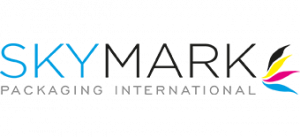
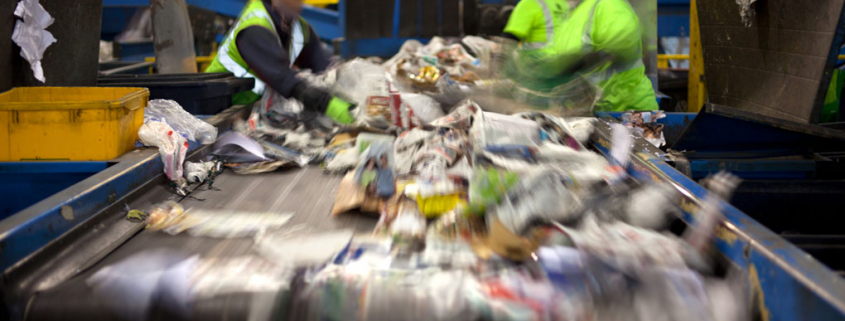
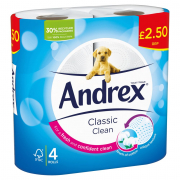
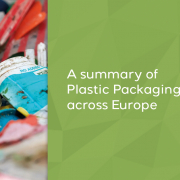
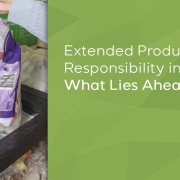
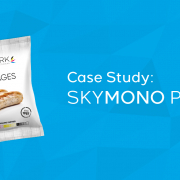
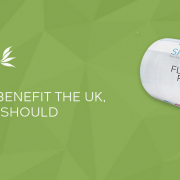
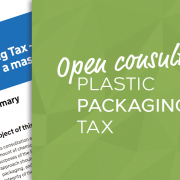






Leave a Reply
Want to join the discussion?Feel free to contribute!